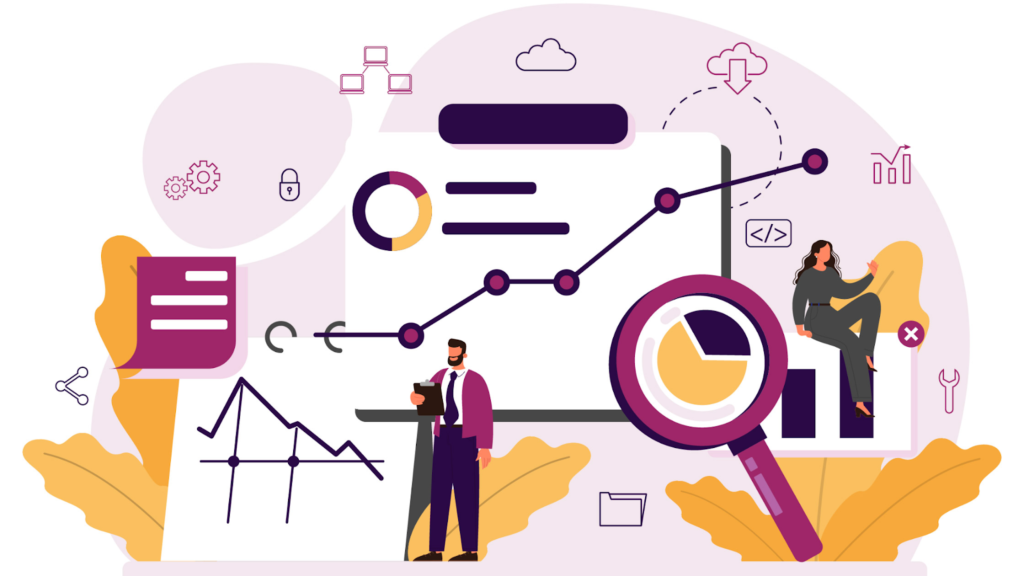No sales strategy can achieve its goals without the right kind of data. Gathering accurate and relevant information about prospects and customers is a key challenge for sales teams today. This is where data enrichment becomes crucial and for this many look to Endato.com for viable solutions. In this article, we’ll dive into what data enrichment is, how it benefits your sales process, and how to use it effectively for better results.
What is Data Enrichment?
Data enrichment is the process of enhancing your existing customer data by adding more information from external sources. This means integrating third-party data with your primary data to create a fuller picture of your prospects and customers.
Key Goals and Benefits of Data Enrichment
-
Understanding Your Ideal Customer Profile (ICP)
Data enrichment helps you gather insights into the characteristics, behaviors, and preferences of your target audience. By enriching your data, your sales team can better understand what defines your ideal customer and tailor their outreach efforts accordingly.
-
Improved Targeting and Segmentation
With enriched data, you can more precisely target and segment your prospect lists. Proper segmentation allows your sales team to customize their messaging and offers to meet the unique needs of each segment, increasing the chances of capturing their attention.
-
Personalization
Additional information from data enrichment, such as social media profiles and contact details, helps craft personalized messages for each prospect. Personalized outreach is more engaging and has a higher likelihood of resonating with your prospects, leading to better engagement rates.
-
Enhanced Lead Qualification
Data enrichment provides better insights into a prospect’s characteristics and behavior, enabling your sales team to assess their suitability as a lead more accurately. This helps prioritize efforts on prospects with a higher likelihood of conversion.
-
Effective Communication Channels
Knowing your leads’ preferred communication channels improves your chances of getting a response. For example, if your leads use LinkedIn frequently, send them messages through LinkedIn. If they prefer phone calls, give them a call. Enriched data helps tailor your communication approach effectively.
Examples of Personalized Outreach
With enriched data, you can move beyond generic messages. For example, instead of a simple “Hi [First Name]” message, you could use detailed information to create a more engaging message:
Example Message:
“Hi [First Name], I noticed we’ll be at the same LinkedIn event [+ link here] soon. I’m also interested in [Event Name] and would love to connect with like-minded people. I saw you work at [Company Name]—how does your company handle [the challenge related to the event topic]? We’re facing a similar challenge at Expandi and would really value your insights.”
Types of Data Enrichment
-
Firmographic Enrichment
This type adds business-related details such as company size, industry, location, revenue, and technology stack. Tools like Clearbit integrate with your CRM to provide these attributes, helping with segmentation and targeting.
-
Technographic Enrichment
Provides insights into the technologies and tools a company uses. Tools like BuiltWith offer data on over 50,000 technologies, helping you understand how your solution can integrate with their existing systems.
-
Demographic Enrichment
Enhances profiles with information such as age, gender, income, education, and location. Clearbit is also useful here, providing details like place of residence and household income.
-
Psychographic Enrichment
Focuses on understanding interests, attitudes, and behaviors. Crystal Knows analyzes data from online profiles and reviews to offer insights into personalities and preferences.
How Data Enrichment Enhances the Sales Process
-
Improved Lead Generation and Qualification
Data enrichment helps identify potential leads that match your ideal customer profile and provides deeper insights into their preferences. This leads to better lead scoring and prioritization, focusing efforts on leads with the highest conversion potential.
-
Enhanced Sales and Marketing Alignment
Data enrichment aids in a seamless handoff between sales and marketing teams. It provides context that helps marketing nurture leads and allows sales to continue conversations effectively. It also supports data-driven collaboration and shared goals.
-
Increased Sales Productivity
By focusing on high-value activities and avoiding low-conversion leads, enriched data boosts productivity. It allows for personalized engagement and helps identify high-potential prospects.
-
Streamlined Account-Based Marketing (ABM)
Data enrichment allows for targeted ABM by helping identify relevant accounts and creating tailored content and campaigns based on enriched data.
-
Better Data on Prospects and Customers
Continuous data enrichment provides comprehensive insights into prospects and customers, including their behavior and engagement history. This leads to more effective sales strategies and decision-making.
Implementing Data Enrichment in Your Sales Strategy
-
Identify Data Gaps and Needs
Evaluate your current data to identify areas where enrichment can add value. Determine what additional information is needed to enhance your understanding of prospects and customers.
-
Choose the Right Data Enrichment Provider
Research and select a reliable provider that offers the types of data relevant to your sales process.
-
Ensure Data Quality and Accuracy
Verify the quality and accuracy of enriched data before integrating it. Regular data cleansing and validation are essential to maintain database integrity.
-
Use Google Sheets for Data Management
Google Sheets is a user-friendly tool for managing enriched data. Create a centralized repository for easy access, although it may have limitations in scalability and security.
-
Integrate Data Enrichment with Your CRM
Automate the enrichment process where possible and integrate enriched data into your CRM for real-time updates. Tools like Expandi can help integrate CRM with LinkedIn, providing up-to-date information.
Tips for Using Enriched Data Effectively
- Segment Your Prospects: Use enriched data to segment prospects based on relevant attributes for more targeted outreach.
- Craft Personalized Messages: Leverage additional information to create messages that resonate with individual prospects.
- Continuously Update and Validate Data: Ensure data remains accurate and up-to-date to support effective sales efforts.
By effectively utilizing data enrichment, your sales team can gain deeper insights, target prospects more accurately, and personalize outreach efforts, ultimately driving better sales results.
In today’s competitive market, having accurate and detailed data is essential for a successful sales strategy. One key method to enhance your data is through data enrichment. This article explains what data enrichment is, how it benefits your sales efforts, and how to use it effectively.
What Is Data Enrichment?
Data enrichment is the process of adding valuable information to your existing customer data by integrating details from external sources. Essentially, it means enhancing the raw data you have with additional information to make it more useful. Here’s how data enrichment can help your sales process:
- Better Understanding of Your Ideal Customer: Data enrichment helps you gather insights into the characteristics, behaviors, and preferences of your target audience. With this enriched data, you can better understand your ideal customer profile (ICP) and tailor your sales approach accordingly.
- Improved Targeting: By using enriched data, you can segment your prospect lists more precisely. This means you can customize your messaging to meet the specific needs of different groups, increasing your chances of engagement.
- Personalized Communication: Enriched data includes details like social media profiles and contact information, allowing you to craft more personalized messages. Personalized communication is more engaging and can lead to better responses.
- Enhanced Lead Qualification: With more detailed information about prospects, you can better assess their suitability as leads. This helps you focus on those with a higher likelihood of conversion.
Types of Data Enrichment
There are several methods for data enrichment, each providing different types of information:
- Firmographic Enrichment: This involves adding business-related details such as company size, industry, and location. Tools like Clearbit help provide this data, which is useful for targeting and segmenting prospects.
- Technographic Enrichment: This method provides insights into the technologies a company uses. Tools like BuiltWith offer information about a company’s tech stack, helping you tailor your sales pitch based on their current technology.
- Demographic Enrichment: This adds personal details such as age, gender, and education level to your customer profiles. Services like Clearbit can provide this type of data to help you personalize your messaging.
- Psychographic Enrichment: This focuses on understanding the interests and behaviors of your prospects. Tools like Crystal Knows offer insights into a person’s attitudes and preferences, which can be used to tailor your sales strategies.
How Data Enrichment Improves Sales
Data enrichment can significantly enhance your sales process in several ways:
- Better Lead Generation and Qualification: Enriched data helps you identify and target leads that fit your ICP. This targeted approach improves the quality of your leads and makes your sales efforts more effective.
- Enhanced Sales and Marketing Alignment: Data enrichment helps sales and marketing teams work together more effectively. It provides valuable context about leads, allowing for smoother transitions and more coordinated efforts.
- Increased Sales Productivity: By streamlining your processes and focusing on high-value activities, enriched data helps sales teams work more efficiently. It allows for more targeted outreach and personalized engagement, leading to better results.
- Effective Account-Based Marketing: For account-based marketing (ABM), data enrichment helps identify and target high-value accounts. It enables the creation of customized content and campaigns, increasing the likelihood of success.
Using Data Enrichment in Your Sales Process
To make the most of data enrichment, follow these steps:
- Identify Data Gaps: Assess your current data and determine what additional information you need.
- Choose a Data Enrichment Provider: Select a reliable provider that offers the types of data relevant to your sales goals.
- Ensure Data Accuracy: Regularly clean and validate your data to maintain its quality.
- Integrate Data into Your CRM: Automate the enrichment process and integrate the data into your CRM system for easy access.
- Segment Your Prospects: Use enriched data to segment your prospects based on relevant attributes.
- Customize Your Messaging: Align your value proposition with the specific needs of each prospect.
- Use Multiple Channels: Identify the preferred communication channels of your prospects and engage with them through those channels.
- Refresh Your Data Regularly: Keep your data up to date to ensure its continued relevance.
Reaching Out to Selected Contacts
When reaching out to contacts, use the enriched data to personalize your messages. Reference shared connections, recent news, or specific challenges they might be facing. Highlight how your product or service addresses their needs and use case studies or success stories relevant to their industry.
Best Practices for Outreach
- Customize Connection Requests: On LinkedIn and other platforms, tailor your connection requests by mentioning specific points of interest.
- Leverage Multiple Channels: Use various communication channels based on the enriched data to maximize engagement.
- Use Automation Tools: Tools like Expandi can streamline your outreach process while maintaining a personal touch.
Challenges of Data Enrichment
Be aware of potential challenges:
- Data Accuracy: External data sources may provide outdated or inaccurate information. Choose reputable providers and regularly validate your data.
- Integration Issues: Integrating enriched data into your CRM can be complex. Ensure you select tools with seamless integration capabilities.
- Analyzing Impact: Measuring how enriched data affects sales performance requires detailed analytics. Use CRM tools with robust reporting features to track effectiveness.
Conclusion
Data enrichment is a powerful tool for enhancing your sales process. By adding valuable information to your existing data, you can improve lead generation, qualification, and overall sales productivity. However, it’s crucial to navigate potential challenges and maintain high-quality data. As technology evolves, data enrichment will continue to play a key role in staying competitive and achieving sales success.

